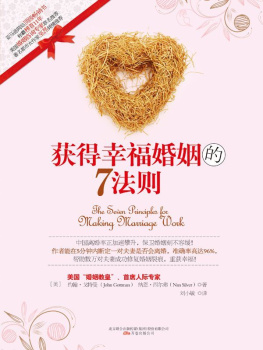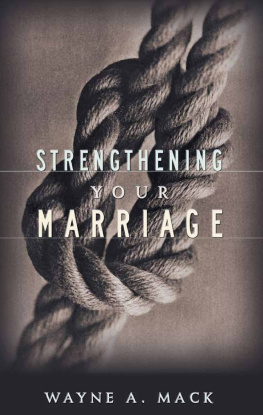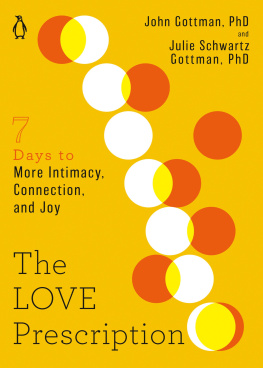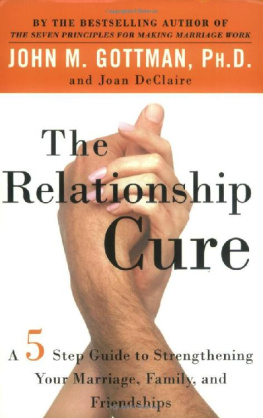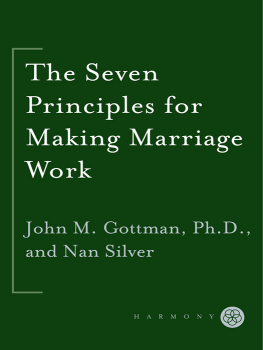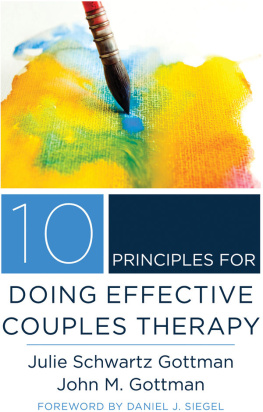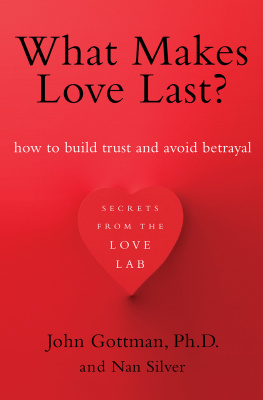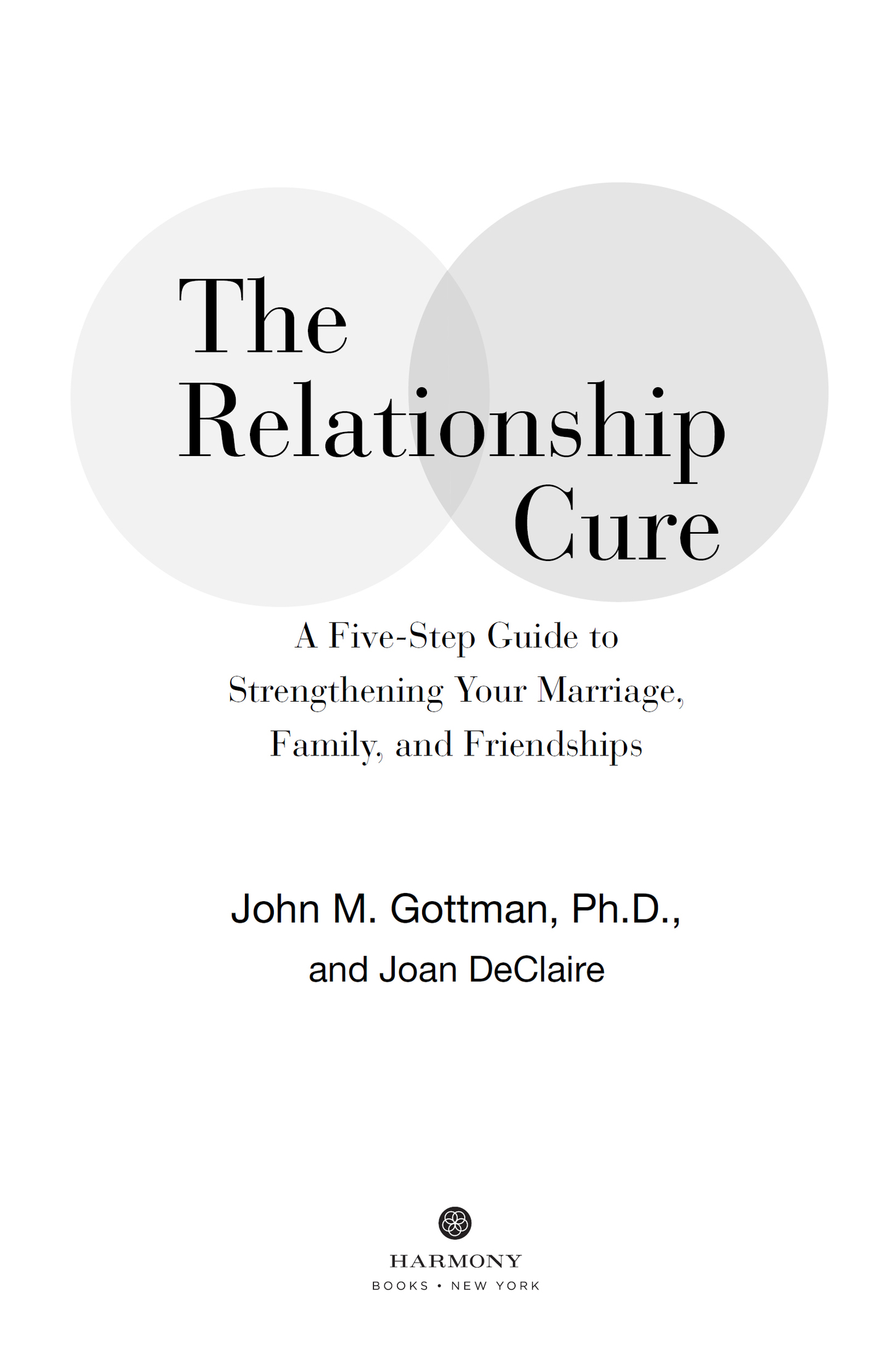Contents
Copyright 2001 by John M. Gottman, Ph.D., and Joan DeClaire
Illustrations copyright 2001 by Julie Schwartz Gottman, Ph.D.
All rights reserved.
Published in the United States by Harmony Books, an imprint of the Crown Publishing Group, a division of Random House LLC, a Penguin Random House Company, New York.
www.crownpublishing.com
Harmony Books is a registered trademark, and the Circle colophon is a trademark of Random House LLC.
Originally published in hardcover in the United States by Crown Publishers in 2001, and subsequently published in paperback by Three Rivers Press, an imprint of the Crown Publishing Group, a division of Random House LLC, New York, in 2002.
Library of Congress Cataloging-in-Publication Data
Gottman, John Mordechai.
The relationship cure: a five-step guide to strengthening your marriage, family, and friendships / John M. Gottman and Joan DeClaire
1. Interpersonal relations. 2. Interpersonal communication. 3. Social interaction.
I. DeClaire, Joan. II. Title
HM1106.G682001
158.2dc212001023115
ISBN9780609809532
Ebook ISBN9781524761776
v4.1
a
Also by John Gottman
Meta-Emotion:
How Families Communicate Emotionally with Lynn Katz and Carole Hooven
The Heart of Parenting:
How to Raise an Emotionally Intelligent Child with Joan DeClaire
The Analysis of Change
Why Marriages Succeed or Fail with Nan Silver
What Predicts Divorce?
The Seven Principles for Making Marriage Work with Nan Silver
To my wife, Julie; my daughter, Moriah; my sister, Batia; and my friend and colleague Bob.
Turning toward them continues to be rewarding.
J.G.
To my parents, Orville and Frances DeClaire, for caring so deeply.
J.D.


This book has emerged primarily from three wonderful collaborations. The first is with my coauthor, Joan DeClaire, who has put a great deal of herself into this book and put up with many frustrations as we puzzled through the ideas in this work. It has been a huge creative effort, the scope of which we didnt understand when we began. Second is the collaboration I have had with my very dedicated and very talented student Jani Driver. She did the hard work of building the bids and turning system from our apartment-lab data. It has been great fun working with her and seeing her talents develop. An amazing scholar and an intuitive observer, she has the potential to become a fine scientist and clinician. The third is the collaboration with my wife, Dr. Julie Schwartz Gottman, who put aside all her many obligations to do the powerful drawings for this book. I greatly appreciate all of her energy and talent in completing these drawings. She also brings to my work a great intuition and sensitivity for people, and every year I keep being more amazed at her depth of understanding and compassion. Without Julies vision, hope, optimism, and encouragement, my laboratory and my work would not be thriving today.
The research that has resulted in this book was made possible by the continuous support I have received from my core laboratory staff, Dr. Sybil Carrere, Catherine Swanson, and Sharon Fentiman. We have been together and friends for more than a decade, and somehow it all works smoothly and keeps getting better all the time. Whether we are doing a television show or running a major study, we continue to be a great team. I also need to thank Virginia Rutter, whose energy, creativity, and imagination have been great at helping me bring this work to the publics attention.
I want to thank the staff of the Gottman Institute, particularly Etana Dykan, Peter Langsam, Kelly Scandone, Shai Steinberg, and Linda Wright, for all their support in planning and running workshops.
Thanks also to the many students and staff who have taught me so much about relationships, particularly Julian Cook, Joann Wu Shortt, Angie Mittman, Jim Coan, Melissa Hawkins, Carole Hooven, Vanessa Kahen Johnson, Lynn Katz, Regina Rushe, Kimberly Ryan, Kristin Swanson, Amber Tabares, Rebecca Tyson, Beverly Wilson, and Dan Yoshimoto.
I would like to acknowledge the amazingly insightful integrative work of Jaak Panksepp, whose great vision about affective neuroscience formed the basis for our work on the emotional command systems. Ive read Jaaks book three times and still have not tapped its great potential.
The National Institute of Mental Health, particularly Drs. Molly Oliveri and Carolyn Morff, have generously supported my work on relationships. Recently, Ron Rabin, executive director of the Kirlin Foundation, and Craig Stewart, executive director of the Apex Foundation, have provided enormous support and encouragement of my work. They have emerged from the darkness and shown me the light ahead.
And thanks to Mark Malone for his help with the manuscript.
J.G.


A very fundamental and simple idea has emerged from our research: We have discovered the elementary constituents of closeness between people, and we have learned the basic principle that regulates how relationships work and also determines a great deal about how conflict between people can be regulated. That basic idea has to do with the way people, in mundane moments in everyday life, make attempts at emotional communication, and how others around them respond, or fail to respond, to these attempts.
Those everyday moments are not very dramatic. They are easily overlooked, and unfortunately that is their usual fate. Nonetheless, they are very powerful. By becoming aware and mindful of such moments, we can give and receive the intimacy and support we all need from our closest relationships.
We can now integrate this basic idea about moments of emotional connection with the seven basic emotional command systems of the brain. These command systems make it possible for us to see directions and purposes for our emotions. Awareness of the emotions these command systems generate allows us to examine what may be missing in our lives, and also to examine mismatches between our needs and the needs of those who are most important to us. Awareness of our emotions within ourselves and the emotions generated within our closest relationships can provide a natural guide for our search for meaning, and can give us the direction in our lives that we are continually seeking.


